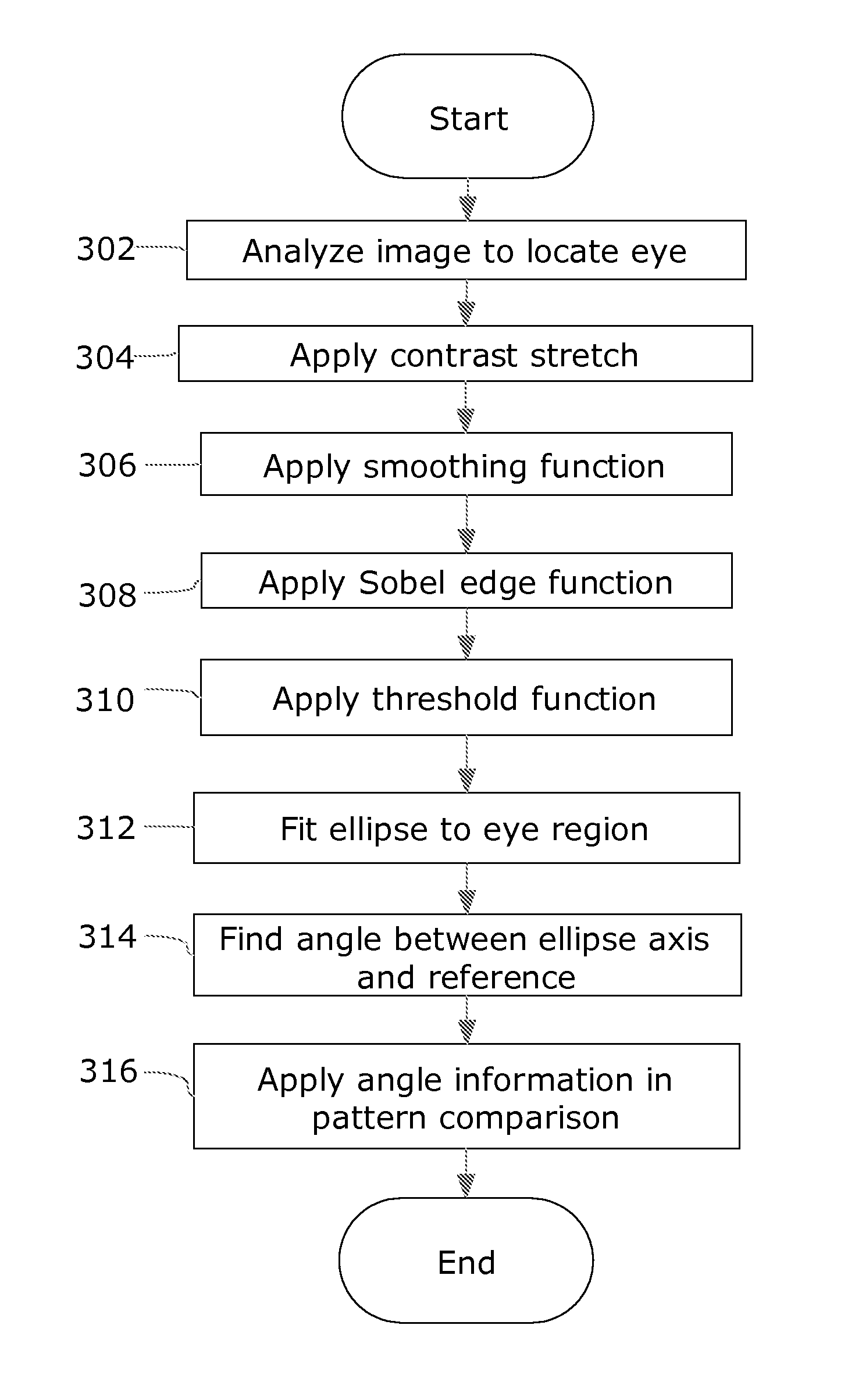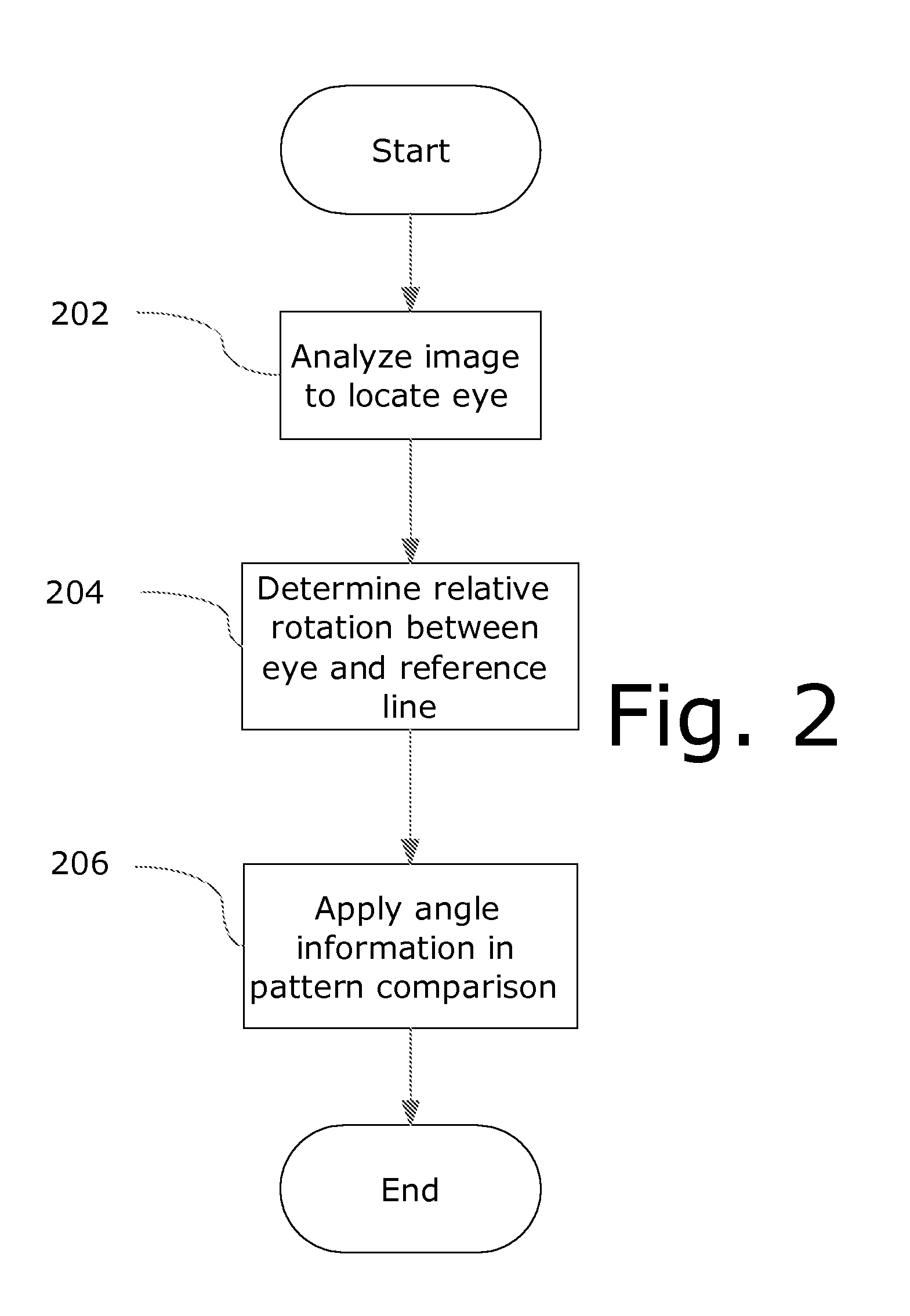Camera Angle Compensation in Iris Identification
a technology of iris identification and camera angle compensation, which is applied in the field of capturing and processing images for biometric iris identification, can solve the problems of significant false rejection rate, failure to find a match, false rejection,
- Summary
- Abstract
- Description
- Claims
- Application Information
AI Technical Summary
Benefits of technology
Problems solved by technology
Method used
Image
Examples
Embodiment Construction
[0030]The present invention will be described in terms of one or more examples, with reference to the accompanying drawings. In the drawings, some like reference numbers indicate identical or functionally similar elements. Additionally, the left-most digit(s) of most reference numbers may identify the drawing in which the reference numbers first appear.
[0031]The present invention will be explained in terms of exemplary embodiments. This specification discloses one or more embodiments that incorporate the features of this invention. The disclosure herein will provide examples of embodiments, including examples of data analysis from which those skilled in the art will appreciate various novel approaches and features developed by the inventors. These various novel approaches and features, as they may appear herein, may be used individually, or in combination with each other as desired.
[0032]In particular, the embodiment(s) described, and references in the specification to “one embodime...
PUM
 Login to View More
Login to View More Abstract
Description
Claims
Application Information
 Login to View More
Login to View More - R&D
- Intellectual Property
- Life Sciences
- Materials
- Tech Scout
- Unparalleled Data Quality
- Higher Quality Content
- 60% Fewer Hallucinations
Browse by: Latest US Patents, China's latest patents, Technical Efficacy Thesaurus, Application Domain, Technology Topic, Popular Technical Reports.
© 2025 PatSnap. All rights reserved.Legal|Privacy policy|Modern Slavery Act Transparency Statement|Sitemap|About US| Contact US: help@patsnap.com



